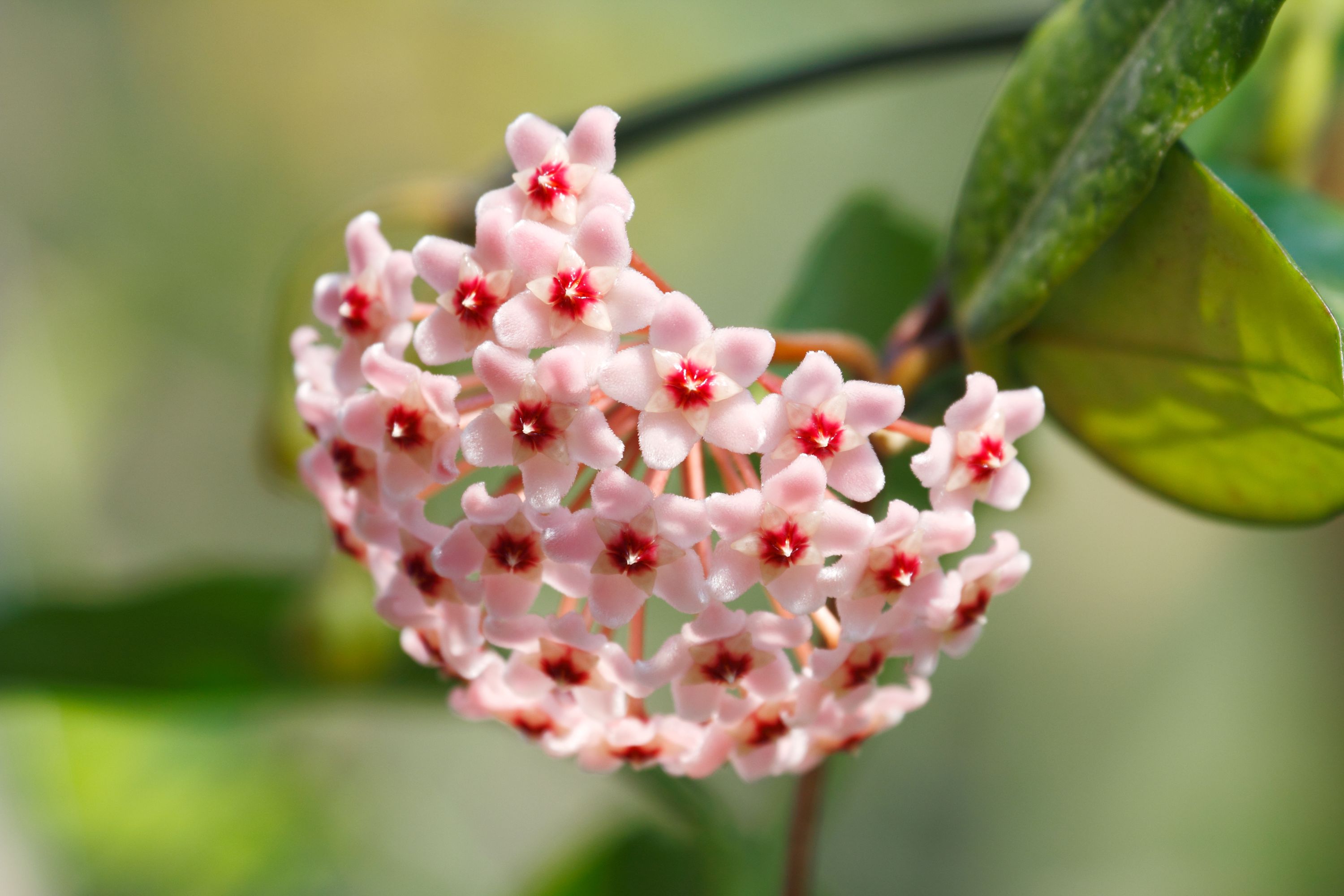Wax plant
(Hoya carnosa)

Description
Hoya carnosa, also known as wax plant or porcelain flower, is a popular houseplant that belongs to the Apocynaceae family. It is a native of Eastern Asia, including China, Japan, and Korea. Hoya carnosa is an evergreen climber that can grow up to 4 meters in height. The plant produces waxy, star-shaped flowers that are highly fragrant and have a range of colors from pink to red. In this article, we will discuss the origin, morphology, care, propagation, and benefits of Hoya carnosa. Origin Hoya carnosa is native to Eastern Asia, including China, Japan, and Korea. It was first introduced to Europe in the early 19th century and quickly became a popular houseplant due to its unique and attractive flowers. Morphology The Hoya carnosa has thick, waxy, and glossy leaves that are dark green and oval-shaped. The leaves grow to be approximately 2-3 inches long and 1-2 inches wide. The vine has a creeping growth habit, but it can be trained to climb up trellises or other support structures. The flowers of the Hoya carnosa are small, star-shaped, and grow in clusters of 10-20. The flowers are usually white or pink with a reddish-pink center and have a sweet, pleasant fragrance. The flowers can last up to 2 weeks and are usually produced in the spring and summer. Cultivation Hoya carnosa is a relatively easy plant to care for and is a popular choice for beginners. Here are some tips for caring for Hoya carnosa: Light: Hoya carnosa prefers bright, indirect sunlight. Too much direct sunlight can scorch the leaves, while too little light can cause the plant to stop flowering. Water: Hoya carnosa prefers well-draining soil that is kept moist but not waterlogged. Water the plant when the top inch of soil feels dry to the touch. Avoid getting water on the leaves or flowers as this can cause them to rot. Temperature: Hoya carnosa prefers temperatures between 60-75°F (15-24°C). Avoid exposing the plant to extreme temperatures, as this can damage the leaves and flowers. Humidity: Hoya carnosa prefers high humidity levels. You can increase humidity levels by placing a tray of water near the plant or by misting the leaves with water. Fertilizer: Hoya carnosa benefits from regular fertilization during the growing season (spring and summer). Use a balanced fertilizer every two weeks. Pruning: Hoya carnosa can be pruned to control its growth and shape. Prune the plant after flowering to promote new growth and remove any dead or damaged branches. Propagation Hoya carnosa can be propagated through stem cuttings. Here are the steps for propagating Hoya carnosa: Take a stem cutting that is around 6 inches long and has at least two leaves. Remove the bottom leaves from the stem cutting. Dip the cut end of the stem cutting into rooting hormone. Plant the stem cutting in a pot filled with well-draining soil. Water the soil and place the pot in a bright, warm location. After a few weeks, the stem cutting should begin to root and produce new growth. Benefits Hoya carnosa has several benefits, including: Air purification: Like many houseplants, Hoya carnosa helps to purify the air by removing toxins and pollutants. Aesthetics: Hoya carnosa is a highly attractive plant that adds a touch of beauty and elegance to any room. Fragrance: Hoya carnosa produces highly fragrant flowers that can help to improve mood and reduce stress. Pests and Diseases: Hoya carnosa is generally resistant to pests and diseases, but it can be affected by mealybugs, scale insects, and spider mites. These pests can be treated with insecticidal soap or neem oil. Overwatering can cause root rot, and the plant may also be susceptible to leaf spot if it is kept too damp. Conclusion Hoya carnosa is a popular houseplant due to its attractive foliage and fragrant flowers. It is relatively easy to care for and can be propagated through stem cuttings or layering. The plant prefers bright, indirect light and well-draining soil, and should be watered when the soil feels dry to the touch. While it is generally resistant to pests and diseases, it can be affected by mealybugs, scale insects, and spider mites, and can be treated with insecticidal soap or neem oil. Overall, Hoya carnosa is a beautiful and rewarding plant to grow for both beginner and experienced gardeners alike.
Taxonomic tree:







